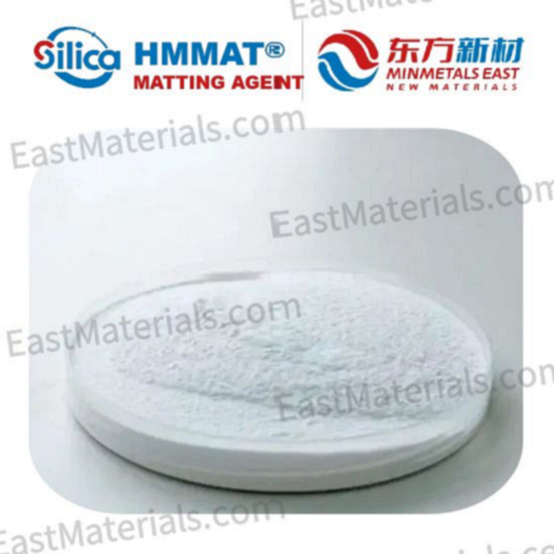
Privacy statement: Your privacy is very important to Us. Our company promises not to disclose your personal information to any external company with out your explicit permission.
Silica Fume For Protective Coatings Display

Choosing the right **Protective Coatings matting agent** for wood coatings involves several considerations to ensure that the final product meets both aesthetic and performance requirements. Here’s a guide to help you select the most suitable matting agent for your specific application:
1. **Determine Desired Gloss Level**
- **Matte, Satin, or Semi-Gloss**: Decide the gloss level you want to achieve. Different matting agents can provide varying degrees of flatness. For example:
- **Matting agents like silica gel** are often used for achieving a matte finish.
- **Talc** might be well-suited for a soft satin look.
2. **Compatibility with Coating System**
- **Base Compatibility**: Ensure that the matting agent is compatible with the type of coating you are using (e.g., water-based, solvent-based, or UV-cured coatings).
- **System Compatibility**: If you're using a specific resin or binder system, consult compatibility charts or manufacturer guidelines regarding which matting agents work best.
3. **Performance Requirements**
- **Durability**: Assess the durability needs of the final product. Some matting agents, like polymeric particles, might offer enhanced abrasion and chemical resistance compared to others.
- **Weather Resistance**: If the wood will be used outdoors, select matting agents that provide good resistance to environmental factors like UV exposure and moisture.
- **Scratch Resistance**: Consider matting agents that enhance scratch resistance if the coated wood will be subject to wear and tear.
4. **Visual Appearance**
- **Clarity**: Evaluate how the matting agent affects the clarity of the finish. Some agents may impart a haze or alter the color.
- **Texture**: Think about whether you want a smooth matte finish or a more textured look. Larger particle sizes can produce a rougher texture, while finer particles yield a softer finish.
5. **Application Method**
- **Spray vs. Brush**: The chosen Silica Matting Agent may behave differently depending on the application method. Some agents might settle quickly or affect leveling properties in spray applications.
- **Mixing and Dispersion**: Check the mixing requirements of the matting agent. Proper dispersion is crucial for uniform gloss levels, so consider whether mechanical mixing or other dispersion methods are required.
6. **Cost Implications**
- **Budget**: Evaluate the cost of different matting agents as they can vary in price. Balance performance and cost efficiency while keeping your budget in mind.
- **Efficiency**: Some matting agents might require lower loading levels to achieve the desired gloss reduction, potentially saving costs in the long run.
7. **Regulatory Considerations**
- **Health and Safety**: Consider the safety aspects of the matting agent. Some substances may pose health risks during mixing and application, so refer to safety data sheets (SDS) for handling guidelines.
- **Environmental Regulations**: Ensure that the selected matting agent complies with any environmental regulations affecting your market, particularly concerning VOC (volatile organic compounds) emissions.
8. **Supplier Support and Recommendations**
- **Consult Manufacturers**: Reach out to suppliers for recommendations, as they often have extensive technical support for their products.
- **Testing and Samples**: Request samples of the matting agent for small-scale testing to evaluate performance, appearance, and compatibility with your specific coating system.
Conclusion
Choosing the right matting agent for wood coatings involves a careful evaluation of gloss requirements, compatibility with coating systems, performance expectations, and application methods. By taking these factors into account, you can ensure that the selected matting agent will help you achieve your desired aesthetic outcomes while providing the necessary durability and functionality for your wood coatings. Testing different agents in small batches can also provide valuable insight into the best choice for your specific needs.
October 20, 2022
October 20, 2022
Speciality Silica Display HPSIL® toothpaste Fumed Silica gel is a specialized ingredient used in the formulation of toothpaste and other oral care products. It is a form of silica (silicon...
Speciality Silica Display 1. Specification Requirements Particle Size: The effectiveness and abrasiveness of silica gel can vary with particle size. Consider the intended use—an appropriate...
Speciality Silica Display 1. Silica Insulations for Toothpaste Formulations Abrasive Agent: HPSIL® is used as a mild abrasive in toothpaste to help remove dental plaque and surface stains from...
Speciality Silica Display 1. Abrasive Properties Mild Abrasiveness: HPSIL® is designed to be a gentle abrasive, effectively removing plaque and stains from the teeth without damaging the enamel....
Email to this supplier
October 20, 2022
October 20, 2022
January 08, 2025
January 08, 2025

Privacy statement: Your privacy is very important to Us. Our company promises not to disclose your personal information to any external company with out your explicit permission.

Fill in more information so that we can get in touch with you faster
Privacy statement: Your privacy is very important to Us. Our company promises not to disclose your personal information to any external company with out your explicit permission.